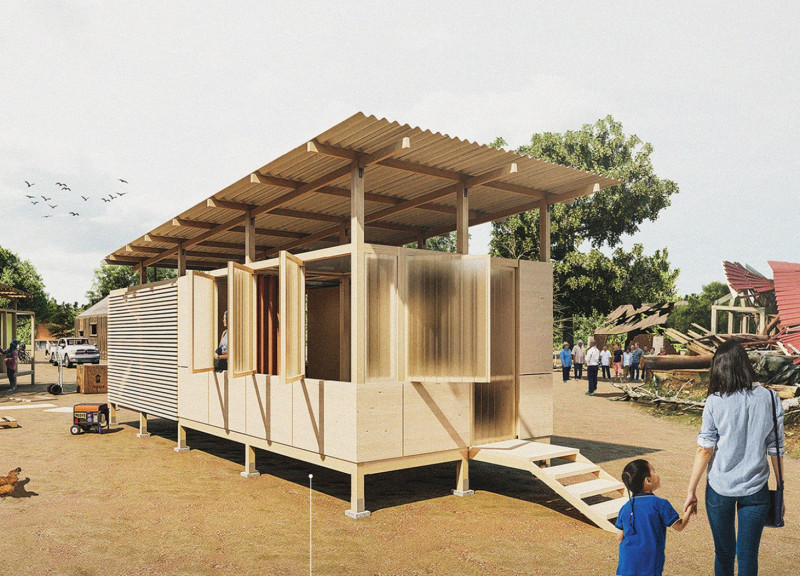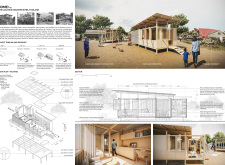5 key facts about this project
Home+AID is an initiative aimed at addressing urgent shelter needs in areas of Thailand affected by natural disasters. With frequent occurrences of floods, storms, landslides, earthquakes, and wildfires, the design focuses on providing immediate, practical housing solutions. The project uses pre-fabricated elements that can be quickly assembled on site, ensuring that those displaced by disasters can find refuge without delay.
Design Flexibility
The layout of Home+AID features flexible living and sleeping areas, allowing residents to adapt the space according to their individual needs. Separate zones are included for cooking, working, storage, and hygiene, enabling efficient use of available space. This adaptability is essential in emergency situations where occupants may have different requirements as they navigate recovery.
Natural Ventilation and Light
Key to the design is the focus on natural ventilation. An open roof allows hot air to escape, offering better airflow throughout the shelter. The use of operable windows ensures that natural light can enter while maintaining privacy with integrated bug screens. These features contribute to a comfortable living environment, enhancing the quality of life for those staying in the shelter.
Sustainability Features
Sustainability is woven into the project through elements like a vertical garden that serves dual purposes. It provides a privacy screen and supports local food production, contributing to self-sufficiency among residents. The design also includes a water management system with a tank to collect and filter rainwater, addressing immediate needs for drinking water and promoting efficient resource use.
Materials and Construction
The construction of Home+AID emphasizes durable and lightweight materials. Corrugated metal sheets are used for the exterior, offering strength and ease of assembly. Wooden lumbers measuring 38 x 89 mm and 89 x 89 mm provide structural support, while plywood boards enhance internal organization. Together, these materials create a manageable and transportable shelter that can be quickly set up in response to emergencies.
Strategically placed openings take advantage of natural elements, ensuring a comfortable shelter experience while maintaining a connection to the outdoors.



















































